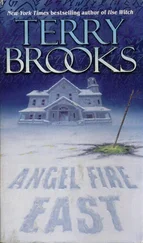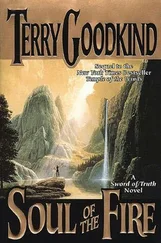“How much is this—going to cost?” Mr. Barber whispered, so his wife and the neighbors couldn’t hear. Carl gave him a mournful, disapproving look, and Mr. Barber turned away, ashamed.
“Hell, I understand where he’s coming from, though,” Carl told me when we were back on the road. “It used to be that when you bought a lawn you could get insurance, especially with a new house, but these days nobody is insured.
You can insure a tree, a potted one, anyway, or a cybershrub, and of course any kind of holo. But a living lawn? Jesus, Gail, no wonder the guy’s worried.”
Carl’s empathy is his best quality.
We stopped for lunch at Lord Byron’s on the Princeton bypass; it’s the only place that’ll allow a girl with no shoes. Lord Byron was a cook at a veterans’ hospital for twenty years before he saved enough to start his own place.
Because of this medical background, he thinks he’s a doctor.
“The usual,” said Carl. Two beers and a sloppy joe on a hard roll.
Lord Byron lifted my cap and his huge warm black hand covered the top of my head. “Just as I thought,” he said. “Cold as ice. Sure you can’t find something on the menu you can eat, Gay?”
He never could say my name right either.
After lunch we changed the motherboard on a flower bed at a funeral home on Route 303. The display was one of those cheap, sixteen-bit jobs that you can’t walk through, that only looks right from a hundred yards or so. Carl had sold it to them last fall. It was supposedly upgradable, but in fact the company that made it had gone out of business over the winter, and now the chip was an orphan; you couldn’t change the variety or even the colors of the flowers without a whole new unit.
Carl explained this hesitantly, expecting an argument, but the funeral home manager signed for the new chip, a Hallmark clone, in a minute. “It’s one of these franchise operations, Gail,” Carl said on the way back to the shop. “They don’t care what they spend. Hell, why should they? It’s all tax deductible under the Environmental Upgrade Act. I never liked flowers much anyway. Even organic ones.”
Tuesday was a better day because we got to dig. We put in ten meters of Patagonian Civet Hedge at Johnson, Johnson, & Johnson. Pat is not really Patagonian; the name is supposed to suggest some kind of hardy stock. It’s actually cyberhedge, a fert-saturated plastate lattice with dri-gro bud lodgements at 20 mm intervals on a 3-D grid.
But the tiny leaves that grow out of it are as real as I am. They bask in the sun and wave in the wind. The bugs, if there were any, would be fooled.
Carl was in a good mood. Ten meters of pat at $325 a meter is a nice piece of change. And since the roots themselves are not alive, you can put them directly into untreated ground. There’s something about the sliding of a shovel into the dirt that stirs the blood of a nurseryman.
“This is the life, right, Gail?” Carl said.
I nodded and grinned back at him. Even though something about the dirt didn’t smell right. It didn’t smell wrong.
It just didn’t smell at all.
After lunch at Lord Byron’s, Carl sold two electric trees at the Garden State Mall. The manager wanted the trees for a display at the main entrance, and Carl had to talk him out of organics. Carl doesn’t like the electrics any better than I do, but sometimes they are the only alternative.
“I sort of wanted real trees,” the manager said.
“Not outdoors you don’t,” Carl said. “Look, organic trees are too frail. Even if you could afford them—and you can’t—they get weird diseases, they fall over. You’ve got to feed them day and night. Let me show you these new Dutch Elms from Microsoft.” He threw the switch on the holoprojector while I started piecing together the sensofence.
“See how great they look?” Carl said. “Go ahead, walk all the way around them. We call them the Immortals. Bugs don’t eat on them, they never get sick, and all you have to feed them is 110. We can set this projector up on the roof, so you don’t have to worry about cars running over it.”
“I sort of wanted something that cast a shadow,” the manager said.
“You don’t want shadows here at the mall anyway,” said Carl, who had an answer for everything when he was selling. “And you won’t have to worry about shoppers walking through the trees”—he passed his hand through the trunk—“and spoiling the image, either. That’s what this fence is for, which my lovely assistant is setting up. Ready, Gail?”
I set two sections of white picket fence next to the tree and snapped them together.
“That’s not a holo,” said the manager.
“No sir. Solid plastic,” Carl said. “And it does a lot more than just keep people from walking or driving though the trees. The pickets themselves are sophisticated envirosensors. Made in Singapore. Watch.”
I turned on the fence, and since there was no wind, Carl blew on a picket. The leaves on the trees waved and wiggled. He covered a picket with his hand and a shadow fell over the treetops. “They respond to actual wind and sun conditions, for the utmost in total realism. Now let’s suppose it looks like rain…”
That was my cue. I handed Carl a paper cup and he sprinkled water on the pickets with his fingertips, like a priest giving a blessing. The leaves of the trees shimmered and looked wet. “We call them the Immortals,” Carl said again, proudly.
“What about birds?”
“Birds?”
“I read somewhere that birds get confused and try to land in the branches or something,” the manager said. “I forget exactly.”
Carl’s laugh was suddenly sad. “How long since you’ve seen a bird?”
Wednesday was the day we had set aside to service Carl’s masterpiece, the Oak Grove at Princeton University.
These were not ailanth-oaks or composite red “woods”; these were full-sized white oaks of solid wood that grew not out of pots but straight out of the “ground”—a .09-acre ecotrap colloid reservoir saturated with a high electrolyte forced-drip solution of Arborpryzinamine Plus, the most effective (and expensive) IV arbostabilizer ever developed.
The ground colloid was so firm that the trees stood without cables, fully forty-four feet tall. They were grand. The Grove was seven oaks in all, only two less than the state forest in Windham. Princeton was the only private institution in New Jersey that could afford so many organic trees.
But something was wrong. There wasn’t a leaf on any of them.
“Code Seven, Gail,” said Carl with an undertone of panic in his voice. I limped up the hill as fast as I could and checked the vats under the Humanities Building, but they were almost full and the solution was correct, so I left them.
Trees aren’t like grass; there was no point in cranking up the IV pump pressure.
Carl was honking the horn, so I got back in the truck and we left to look for the Dean of Grounds. He wasn’t in his office. We found him at Knowledge Hall, watching an outfit from Bucks County do a scan-in on the north wall ivy. The ivy wasn’t quite dead yet; I could hear its faint brown moaning as the software scanned and replicated each dying tendril, replacing it with a vivid green image. Then the old stuff was pulled down with a long wall rake and bagged. I was getting a headache.
“I just came from the Grove,” Carl demanded. “How long have the oaks been bare like that? Why didn’t you call me?”
“I figured they were automatic,” said the Grounds Dean. “Besides, nobody’s blaming you.”
The image-ivy came complete with butterflies, hovering tirelessly.
“It’s not a question of blame,” said Carl. Exasperated with the Grounds Dean, he put the pickup into gear. “Jump in, Gail,” he said. “Let’s head back to the Grove. I think we’ve got a Code Seven here. It’s time for the Thumper.”
Читать дальше












